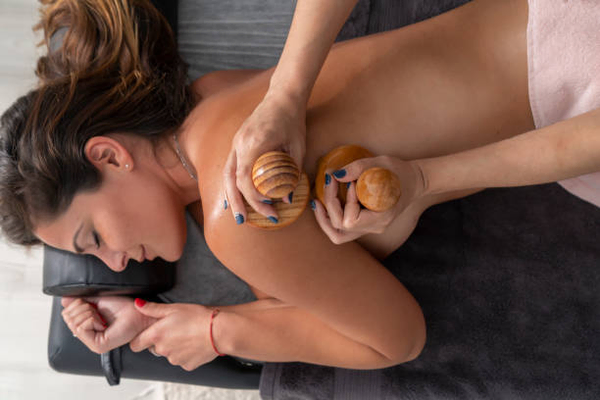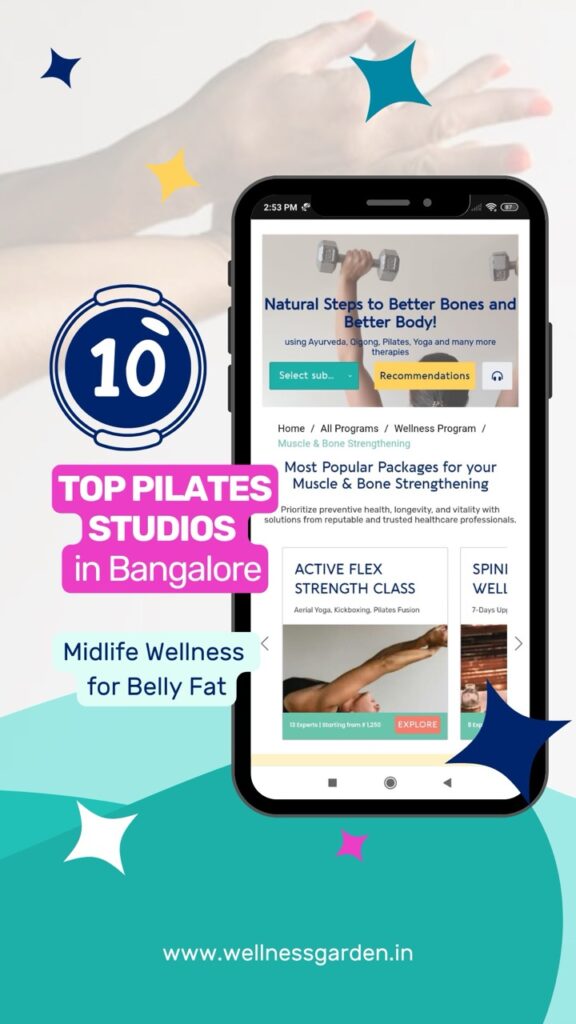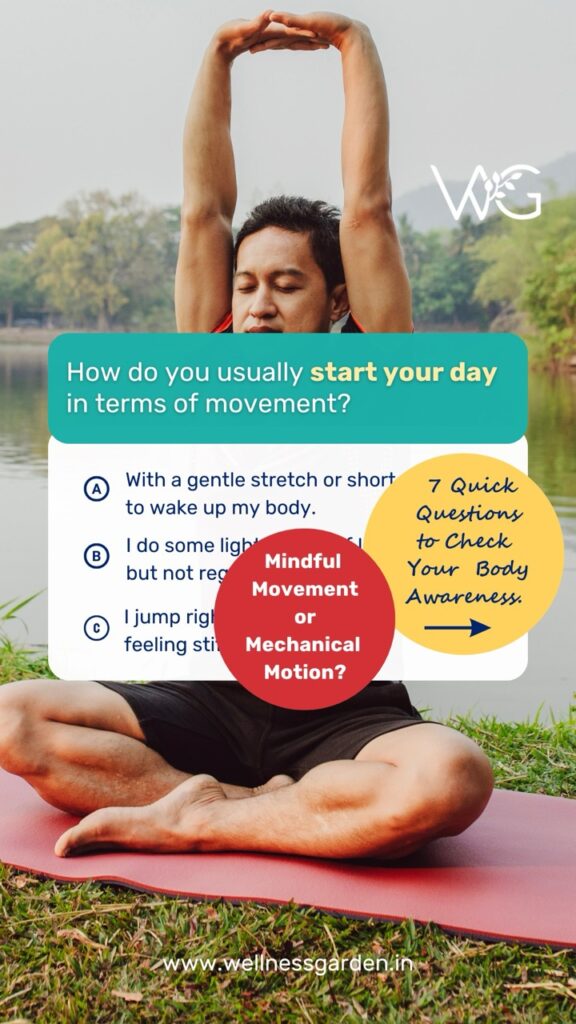Thai Massage in Bangalore: Soothing Neck & Shoulder Pain with Full-Body Relaxation
- Movement
- 3 Mins
- August 27, 2025
- Wassa Lakkham
- Pain relief, thai body massage
Massage comes in many forms, but Thai massage in Bangalore stands out as one of the most renowned practices worldwide. Unlike passive treatments, it combines gentle stretching, yoga-like movements, and targeted pressure to release muscle tension—helping you manage stress and ease tension in your daily life.
At Wellness Garden, a Bangalore-based digital platform for natural healing, we connect you with expert practitioners, offering both online guidance and nearby offline sessions, so you can enjoy the full physical and mental benefits of this ancient practice.

Thai Massage in Bangalore: Relieve Shoulder & Back Stiffness Naturally
Frozen shoulder, neck stiffness, and upper-back tension are among the most common issues today—often caused by long desk hours, excessive screen use, or sports-related strain. Thai massage, or Nuad Bo-Rarn (“ancient massage”), offers a natural and time-tested solution. With origins in India during Buddha’s time and refined over 2,500 years in Thailand by Shivago Komarpaj—the revered “Father Doctor” of Asia—this therapy blends acupressure, deep tissue pressure, assisted stretching, and yoga-like postures to restore mobility and release tightness.
Unlike a spa massage, Thai massage is movement-based and deeply therapeutic. Therapists use rhythmic compressions and stretches to correct posture, improve flexibility, and ease stiffness—often bringing relief within 2–4 weeks. Unlike oil-based massages such as Ayurveda’s Abhyanga or Swedish massage, Thai massage is performed fully clothed and focuses on functional change rather than relaxation alone. Often called “Thai Yoga Massage” or the “lazy person’s yoga,” it works on energy lines, fascia, muscles, and joints—making it especially effective for frozen shoulders and chronic stiffness.
What makes Thai massage in Bangalore unique is its dynamic approach. Therapists use not only their hands, but also elbows, knees, and feet to apply pressure and create assisted stretches. The experience feels like a fusion of yoga and physiotherapy—energizing yet deeply restorative.
When practiced regularly—especially alongside yoga, physiotherapy, or mindfulness—Thai massage supports faster recovery, better posture, and long-term prevention of recurring stiffness. Its revival in the 1980s brought it global recognition, with modern practitioners like Wassa Lakkham refining techniques to combine deep tissue work with dynamic stretching for lasting relief.
As part of holistic wellness programs, Thai massage beautifully complements deep tissue pressure, muscle and joint stretching, Ayurveda therapies. In Bangalore, many are turning to reputed Thai massage spas as a natural choice for recovery, relaxation, and balance—helping both women and men find freedom from frozen shoulder and upper-body tension.
How Thai Massage Works on Neck, Shoulder & Upper Back Pain
Thai massage isn’t a one-size-fits-all therapy. Every session is carefully tailored to your health needs, posture habits, and lifestyle. Here’s what to expect step by step:
1. Consultation & Pain Mapping
Each Thai massage session begins with a quick consultation where the therapist asks about your lifestyle, posture habits, pain history, and areas of stiffness. This step is crucial because neck and shoulder pain can come from different sources—desk work, stress, or even poor sleeping positions. A pain map is often created to identify exact zones of tension, ensuring that the treatment is personalized rather than generic.
2. Acupressure Along Sen Energy Lines
Thai massage relies on Sen energy lines, similar to acupuncture meridians, to release tension and restore balance. The therapist applies steady pressure using thumbs, elbows, or forearms on specific points along these lines. Based on your age, metabolism, mobility, and goals, the therapist adjusts the intensity of stretches and the pressure applied. This helps to unblock stagnant energy, improve circulation, and relax tight muscles in the neck and upper back. For people suffering from frozen shoulders or repetitive strain, this acupressure technique often brings immediate relief.
3. Assisted Yoga-Like Stretches
One of the hallmarks of Thai massage is the use of assisted stretches, where the therapist gently moves your body into yoga-like postures. These movements lengthen tight muscles, open up stiff joints, and create more space in the neck and shoulders. For office workers or those with sedentary lifestyles, these stretches counteract the effects of slouching and improve spinal alignment, making daily movement smoother and less painful.
4. Use of Tools & Enhancements
Thai massage goes beyond hands-on techniques by incorporating traditional tools to enhance its benefits. A futon (Thai massage mat) ensures proper support and safe alignment of the spine and joints, while bolsters provide extra support for the neck and shoulders during stretches. Therapists may use a herbal compress (Luk Pra Kob)—a warm pouch filled with herbs—to improve blood circulation and reduce inflammation. Thai balms are sometimes applied to provide localized warmth. Advanced practitioners may also incorporate Tok Sen (wooden massage tools such as Kong, Rosewood reflexology tools, wooden rollers, and hand tools) and Pha Khaw Ma, a versatile Thai cloth that helps release deep-seated tension and serves multiple purposes during the massage.
5. Session Duration & Setup
Sessions typically last between 30 to 90 minutes, depending on your needs and comfort level. Shorter sessions are ideal for beginners or those targeting specific areas, while longer treatments provide full-body benefits. Unlike oil massages, Thai massage is performed fully clothed, with no creams or oils used. Clients are advised to wear loose, comfortable clothing that allows free movement. For pain relief, 1–2 weekly sessions are recommended at first, followed by maintenance sessions every 2–4 weeks.
6. Relaxation, Aftercare & Hydration
After a session, clients often report immediate relief, improved mobility, and a sense of calm. To extend the benefits, therapists may guide simple breathing techniques and stretches you can do at home. Hydration plays a key role after Thai massage, as it helps flush toxins released during treatment and supports better muscle recovery. Taking time to rest after the session allows the body to fully integrate the release of tension.
7. Progress Tracking & Long-Term Results
Progress is not measured by one session alone but through consistent improvements. Therapists track changes in range of motion, posture, and pain levels across multiple visits. Pressure and stretches are adjusted as you improve, ensuring sustainable results. Over time, regular Thai massage helps prevent recurring stiffness, improves body alignment, and supports overall upper-body wellness.
8 Key Benefits of Thai Massage for Upper-Back and Shoulder Wellness
According to the study, Thai massage delivers fast recovery, with noticeable improvements in pain relief and neck mobility within 2–4 weeks. Here are eight of the most impactful benefits you can experience:

1. Relieves Shoulder Pain and Headaches
Tension in the upper body often contributes to headaches and migraines. Thai massage breaks this cycle by relaxing stiff shoulder muscles, improving joint movement, and restoring natural mobility. Many people report fewer headaches once this tightness is released.
2. Reduces Joint Stiffness and Discomfort
Conditions like frozen shoulder, arthritis, or repetitive strain can limit flexibility. Thai massage blends stretching, mobilization, and compression to ease stiffness and restore smooth motion in the joints, making daily activities less painful and more manageable.
3. Supports Overall Back Health
Shoulder or neck pain rarely occurs in isolation—it often affects the whole spine. Thai massage addresses the upper, middle, and lower back, while also working on related areas like the abdomen and hips. This holistic approach prevents imbalances in one area from creating strain elsewhere.
4. Improves Posture
Long hours at a desk or frequent phone use often cause rounded shoulders and spinal misalignment. Thai massage helps by opening the chest, releasing tight muscles, and supporting proper alignment. Over time, posture improves naturally, reducing recurring strain.
5. Enhances Flexibility and Range of Motion
Through assisted stretching and focused pressure, Thai massage increases flexibility in the neck, shoulders, and spine. With better mobility, everyday movements—such as lifting, reaching, or turning the head—become easier and more comfortable, especially for women balancing work and family.
6. Boosts Vitality, Mental Clarity & Wellness
Thai massage invigorates the body while stimulating energy pathways, improving circulation, oxygen flow, and nervous system balance. Clients often feel recharged and mentally clear, with added benefits like better sleep, enhanced relaxation, improved digestion, and increased mindfulness.
7. Promotes Circulation and Recovery
Rhythmic pressure and stretching increase blood flow, delivering nutrients and oxygen to tired muscles. This reduces inflammation, supports tissue repair, and speeds recovery from fatigue. Enhanced circulation also strengthens immunity and long-term resilience.
8. Calms Stress and Deep Tension
Beyond physical relief, Thai massage deeply soothes the nervous system. Its slow, meditative rhythm lowers stress hormones, restoring emotional balance along with muscular release. This dual benefit makes it especially effective for stress-related neck and shoulder tightness.
Risks & Safety Tips for Thai Massage
Thai massage is generally safe and highly effective when performed by a trained therapist. However, rough or improper techniques may affect heart rate, strain joints, or cause muscle discomfort.
Those with pre-existing conditions—such as heart disease, high blood pressure, osteoporosis, uncontrolled diabetes, or cancer—should consult a doctor before starting. Always stop the session if you feel pain, tingling, or discomfort, to ensure safety and effectiveness.
Common Risks
- Over-stretching – can lead to soreness if forced.
- Nerve compression – improper pressure may cause numbness or tingling.
- Burns – from overheated herbal compresses used in some treatments.
Therapist Checklist
Choose only certified therapists with 250–500+ hours of training (Wat Pho, ITM, or Thai Healing Alliance credentials). A good therapist will:
- Take a health assessment before starting.
- Adjust pressure and stretches based on your feedback.
- Maintain hygiene and safe practices.
Wellness Garden: Your Gateway to Personalised Thai Massage in Bangalore
Wellness Garden connects you to trusted Thai massage experts in Bangalore, offering personalised sessions to relieve neck, shoulder, and upper back tension. Whether you prefer weekend or weekday appointments, in-person or online guidance, support is available wherever you are.
Sessions are customized to your needs, combining traditional Thai massage techniques, acupressure, guided stretching, and energy line (Sen line) stimulation to release blocked energy, improve circulation, and restore flexibility.
Beyond massage, Wellness Garden also links you to complementary therapies such as yoga, posture correction, and holistic wellness programs, creating a complete approach to upper-body health, stress relief, and overall wellbeing.
You can experience sessions at urban wellness centers, retreats, clinics, or from the comfort of home online, with guidance for follow-ups and progress tracking to ensure lasting benefits.
Wellness Garden emphasizes natural, preventive care, helping you achieve long-term relief from stiffness, improved posture, enhanced circulation, reduced tension headaches, and a calmer mind. Expert insights, tips, and wellness updates help you integrate these practices into daily life for sustainable results.
Real Experiences
Booking a Thai massage session through Wellness Garden was a game-changer for my neck and shoulder pain. The therapist customized the session to my needs, and I felt immediate relief and improved flexibility.
-Shivangi, Whitefield
Wellness Garden connected me to a certified Thai massage expert in Koramangala. The mix of acupressure, guided stretches, and posture tips not only eased my upper-back tension but also left me feeling more relaxed and energized.
-Anika S, Indiranagar
I was a bit nervous about trying Thai massage at home, but Wellness Garden made it so easy. The expert guided me through techniques and stretches, and within a few sessions, my neck felt less stiff and more mobile.
-Priya K, MG Road
FQAs
1. Do I need to wear clothes?
Yes. Just wear loose, comfy clothes so you can move freely. You’ll stay fully clothed throughout the session.
2. Will it drain my lymph nodes?
Thai massage boosts circulation and helps your lymph flow, but it’s not a medical lymphatic drainage treatment. Think of it as gentle support for overall wellness.
3. Does it include breasts?
Nope. Thai massage focuses on the neck, shoulders, back, arms, and legs—breasts are not part of the session.
4. Can I combine it with other therapies?
Absolutely. It works well with yoga, physiotherapy, acupuncture, or other holistic practices. Just let your therapist know what you’re doing so they can tailor the session safely.
5. How often should I get a session?
If you’re new, 1–2 times a week works well. For maintenance, once every 2–4 weeks is usually enough, depending on your needs and progress.
6. Where can I get a session?
You can visit wellness centers, retreats, clinics, or even get online guidance from Wellness Garden’s trusted experts—whatever works best for you.
- Table of Contents
- • Thai Massage
- • How it Works?
- • 8 Key Benefits
- • Risks & Safety Tips
- • How WG helps?
- • FQAs
Recent Posts
Join Our Newsletter
End note from WG Team
WG Team
Take the next step in your wellness journey. Discover how our curated non-allopathic therapies can complement newfound knowledge at www.program.wellnessgarden.in or reach out for personalized guidance to our team at info@wellnessgarden.in.
Disclaimer: This information is provided for educational purposes and should not be construed as medical advice. Please consult with healthcare practitioners before undertaking any changes in wellness routines or adding new therapies.
Latest Blogs
Check out some of your blogs related to your interest.
- September 21, 2025
- Dr. Miuru Jayaweera
- 3 Mins
- September 6, 2025
- Dr. C. A. Ansar
- 3 Mins
- September 4, 2025
- Dr. Khyati Singh
- 3 Mins

- August 30, 2025
- Namrata Purohit
- 2 Mins





